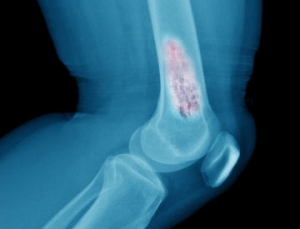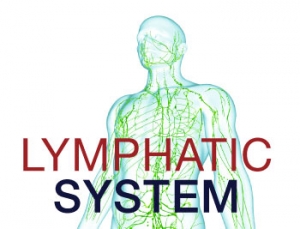Elijah Artman
The skeletal system is made up of bones and joints and provides support, mobility, and protection to various organs in the body. We are born with more than 300 bones. Many of them, such as the skull bones, fuse together and as an adult we have 206 bones. The largest bone in the human body is the femur (thigh bone) and the smallest bones in the human body are the three bones of the middle ear. Maximum bone growth occurs during childhood and puberty, and tapers off as the person approaches 16-18 years of age. While the bones do not grow in size after 18-20 years, they do not remain just as stagnant, hard and inert structures. Continuous metabolic processes called bone remodeling, during which bone is resorbed and formed again occur throughout our life. A major role in this process is played by specialized cells in the skeletal system called osteoblasts which are bone lining cells, and osteoclasts which are bone dissolving cells. Our entire skeleton is renewed every few years and it is estimated that at any time about 20% of an adult bone is undergoing remodeling.
We are exposed to a variety of infectious agents in the environment such as bacteria, viruses, and parasites. One of the recently published studies indicates that viruses can spread from one person to another through very fine air particles exchanged just by breathing.1 The tiny particles stay suspended in the air for a long time, even when the person may not be symptomatically ill. That means a sick person does not need to be coughing or sneezing to spread the virus. Any seasonal change challenges our immune system with new pathogens; therefore, our immune system needs to be functioning at its optimum to fight infectious agents.
Influenza (flu) season in the northern hemisphere starts in late fall and peaks in winter. Flu is a common viral disease and affects up to 20% of the world’s population every year. This year the flu season has become more severe and serious. In most cases the flu is benign but it can also have serious consequences, especially in people with compromised immune systems, the elderly, and children. Worldwide, the flu is estimated to cause 250,000 to 500,000 deaths each year.
Approximately half the population in western countries takes supplements on a daily basis. Women, children, a growing aging population, and increasing consumer awareness about general health heavily contributes to the popularity of supplements. The global supplement market is $82 billion and the US contributes $37 billion to that number. Faced with countless options and a worldwide market, choosing supplements can be overwhelming. Rarely are consumers supplied with sufficient scientific information upon which to base their decisions and they usually rely on a company’s marketing materials.
Bone cancer is the cancer originating primarily from the bone and its surrounding tissue. However, the most common form of cancer in the bones is from metastasis from another primary cancer at a different organ. Osteosarcoma is the most common primary bone cancer followed by chondrosarcoma, Ewing’s sarcoma, fibrosarcoma and others.
In the previous issue of our Health Science News Page, we learned about a normal lymphatic system. Here we will explore cancer of the lymphatic system - lymphoma. Every three minutes in the United States one person is diagnosed with some type of blood cancer such as that affecting the white blood cells (leukemia), the lymphatic system (lymphoma) and the bone marrow (myeloma).
The lymphatic system is an extremely important system in the body and working in conjunction with the circulatory system it helps with the elimination of toxins and other waste materials from the body. The lymphatic system consists of various organs, lymphatic ducts, and lymph nodes, and it transports a clear fluid called lymph. The lymph and the lymphatic system does not receive the same attention as that of the blood circulation, and remains a mysterious entity for many.
In our last issue of the Health Science News Page, we discussed the hazards of radiation exposure. Body imaging through X rays and CT scans are extremely essential and can be lifesavers in many cases of emergencies. However, due to non-invasive, fast and painless ways of diagnosing, X rays and CT scans have been used in excessive amounts.
In the past few decades, everyone gets excessive and unmeasured radiation exposure through sources such as substances in the earth’s crust and space, microwave ovens, electric power lines, radio signals, cell phones, airport scanners and even transcontinental flights. A recent study highlighted that even the minimal dose of radiation received from these sources has a cumulative effect and is proven to lead to damage to cellular DNA, which could lead to cancers decades after the exposure.
Early detection of health problems is very important in diagnosing or sometimes eliminating disease at its onset. Over the last decades, various imaging techniques such as X-rays, ultrasounds, MRI (Magnetic Resonance Imaging) and CT or CAT scans (Computerized Assisted Tomography) have been developed and applied for diagnostic as well as therapeutic medical care. However, in recent years many doctors, and especially radiologists, became concerned with overuse of certain diagnostic techniques -, in particular those that expose patients to radiation.
Despite ever increasing prescriptions for the cholesterol-lowering drugs knows as statins, cardiovascular disease continues and is expected to increase 40% worldwide by 2030. Atherosclerosis, the underlying cause of heart attacks and strokes, causes a staggering 17 million deaths each year.
This disease persists because conventional medicine has consistently failed to address its root causes; instead it focuses merely on its symptoms by mechanical lowering of blood cholesterol levels, blood pressure, and blood sugar with drugs. It is now becoming evident that targeting blood cholesterol has not been successful in controlling heart disease.









